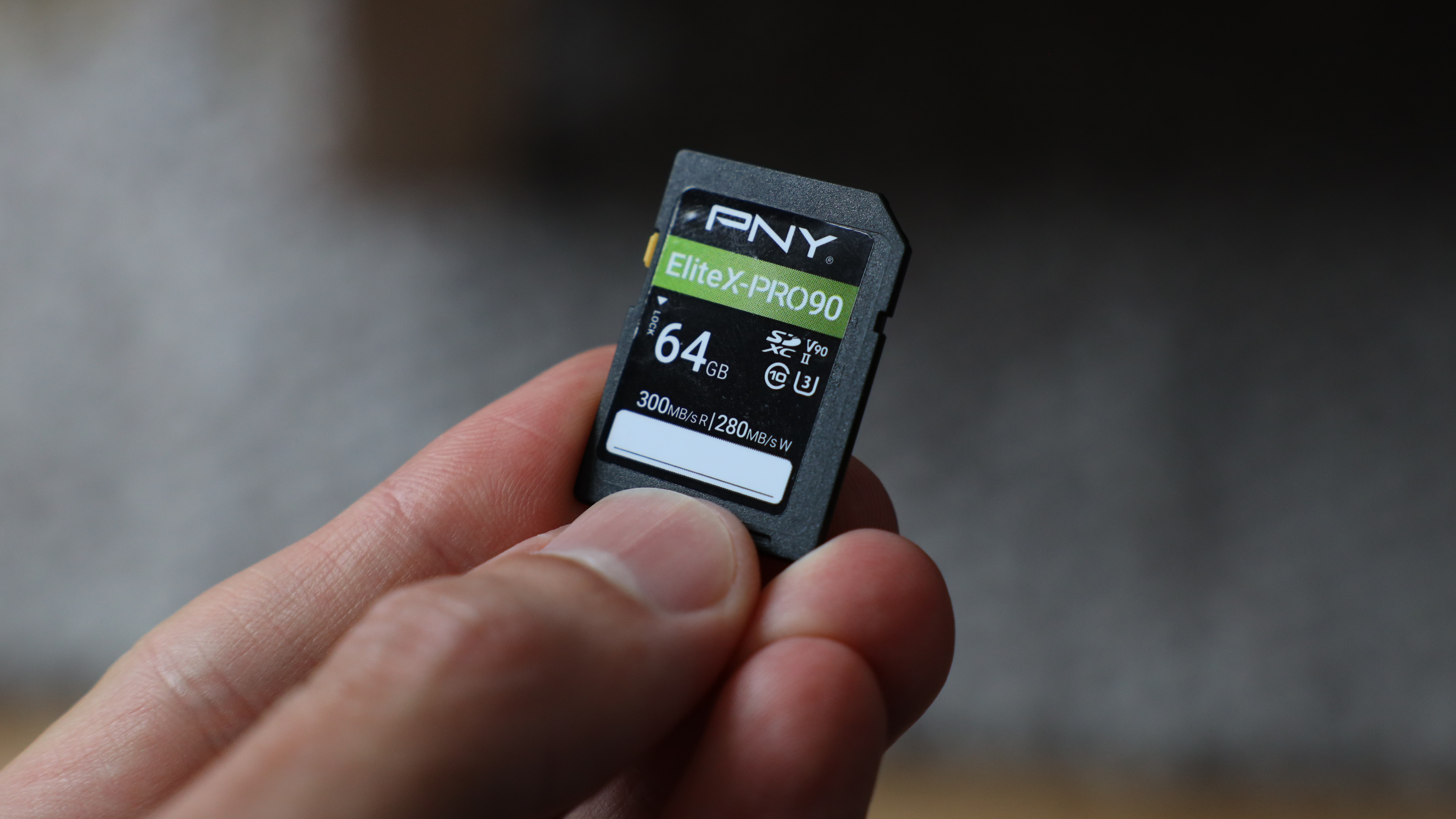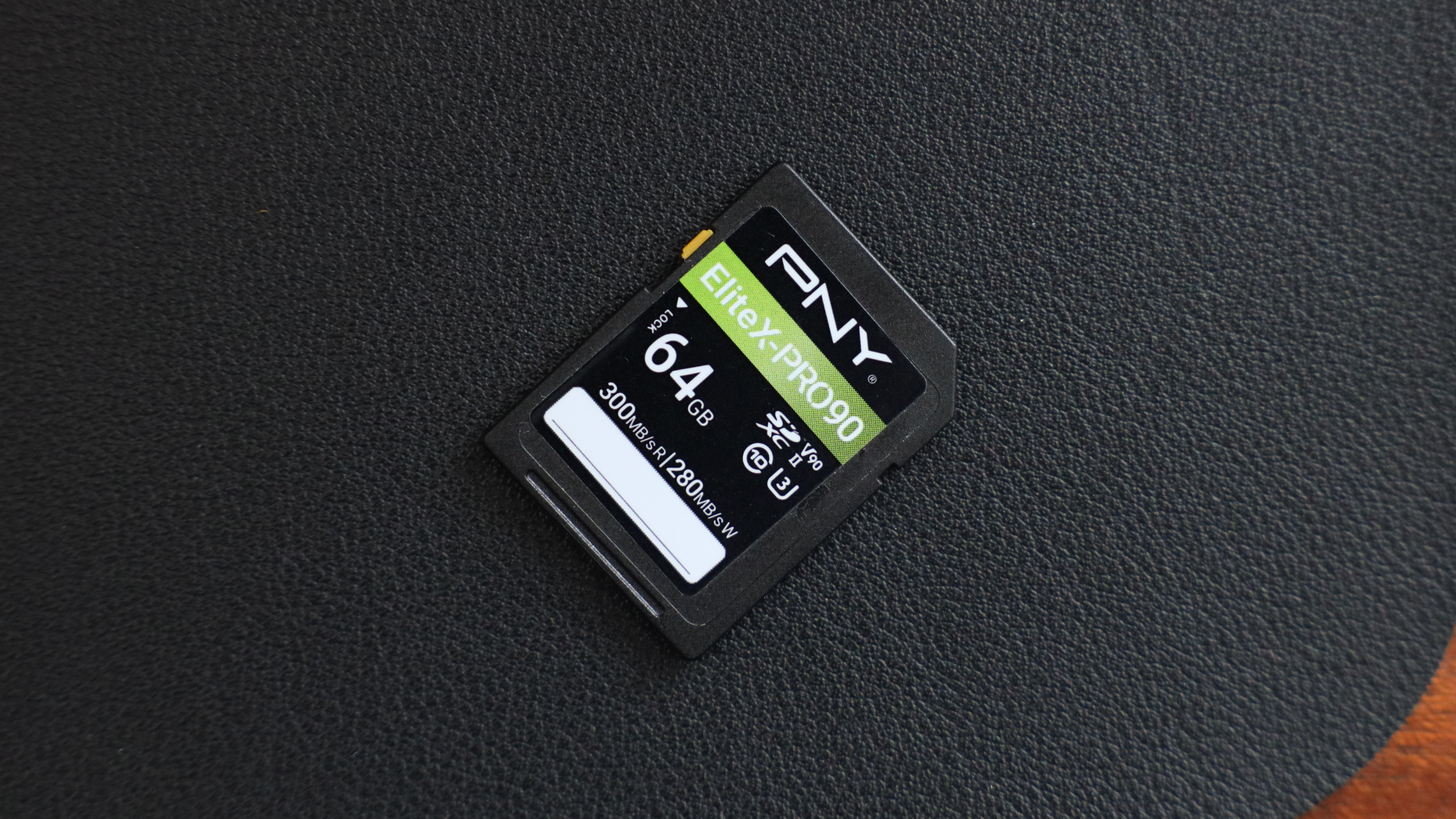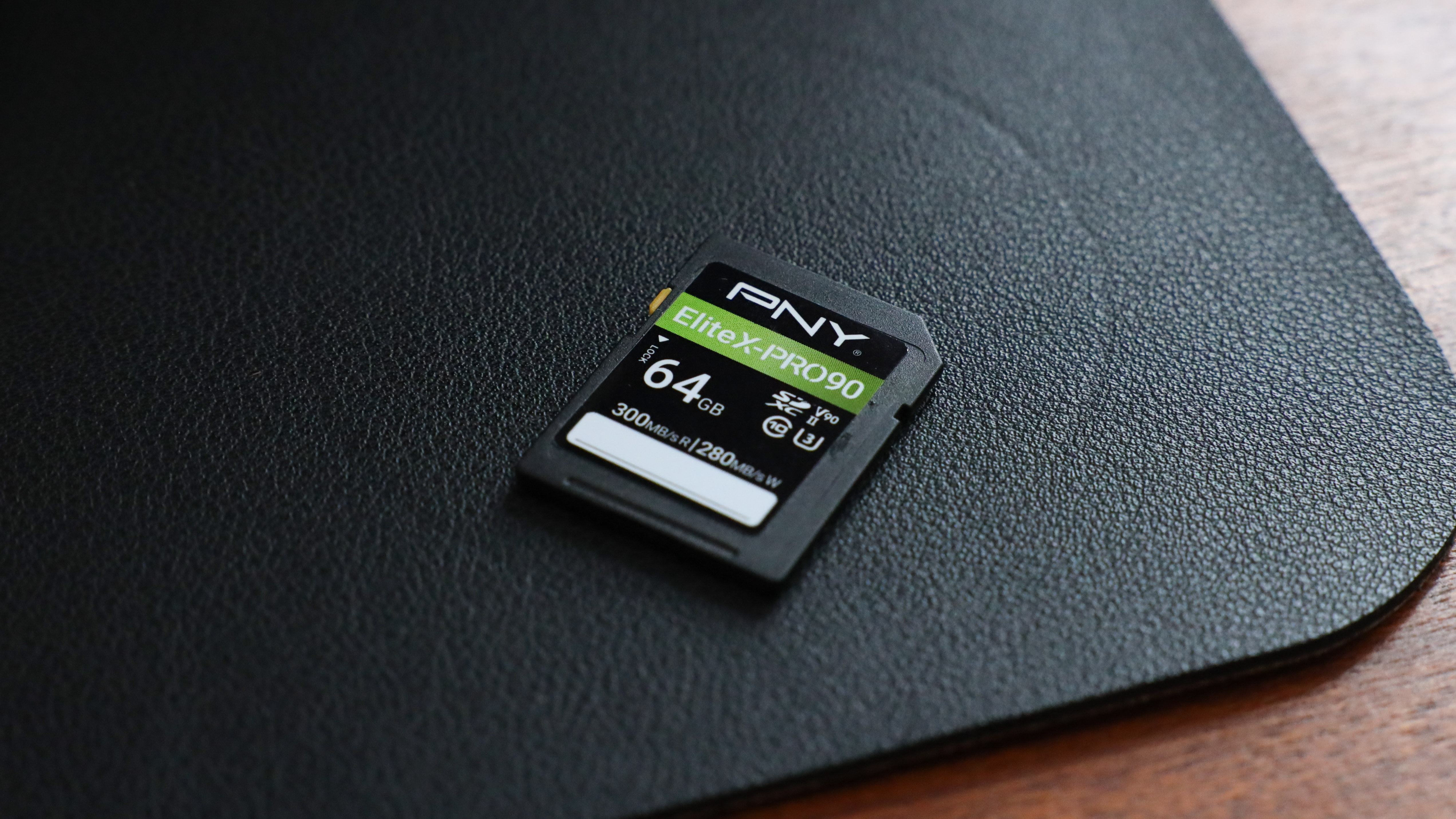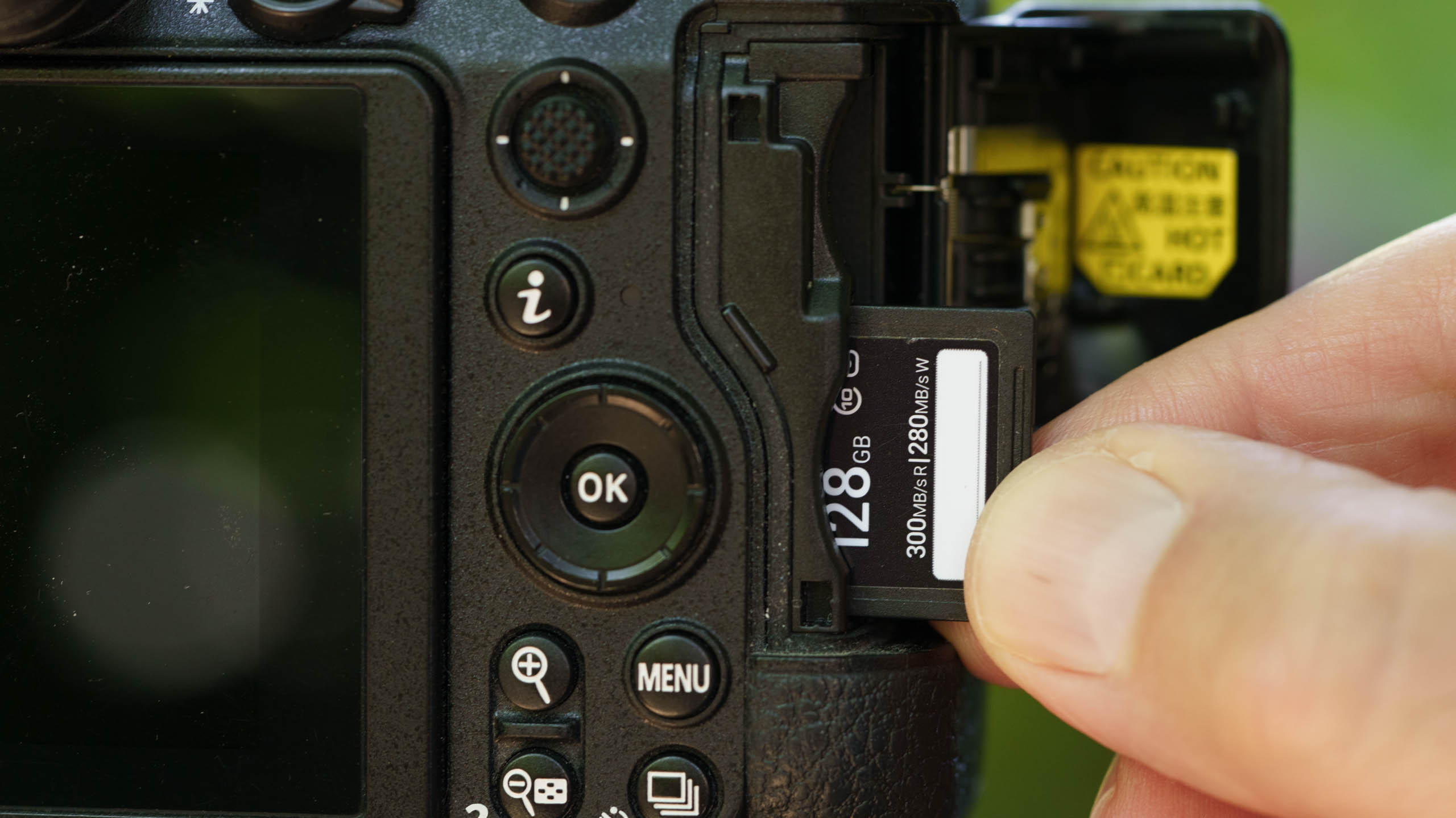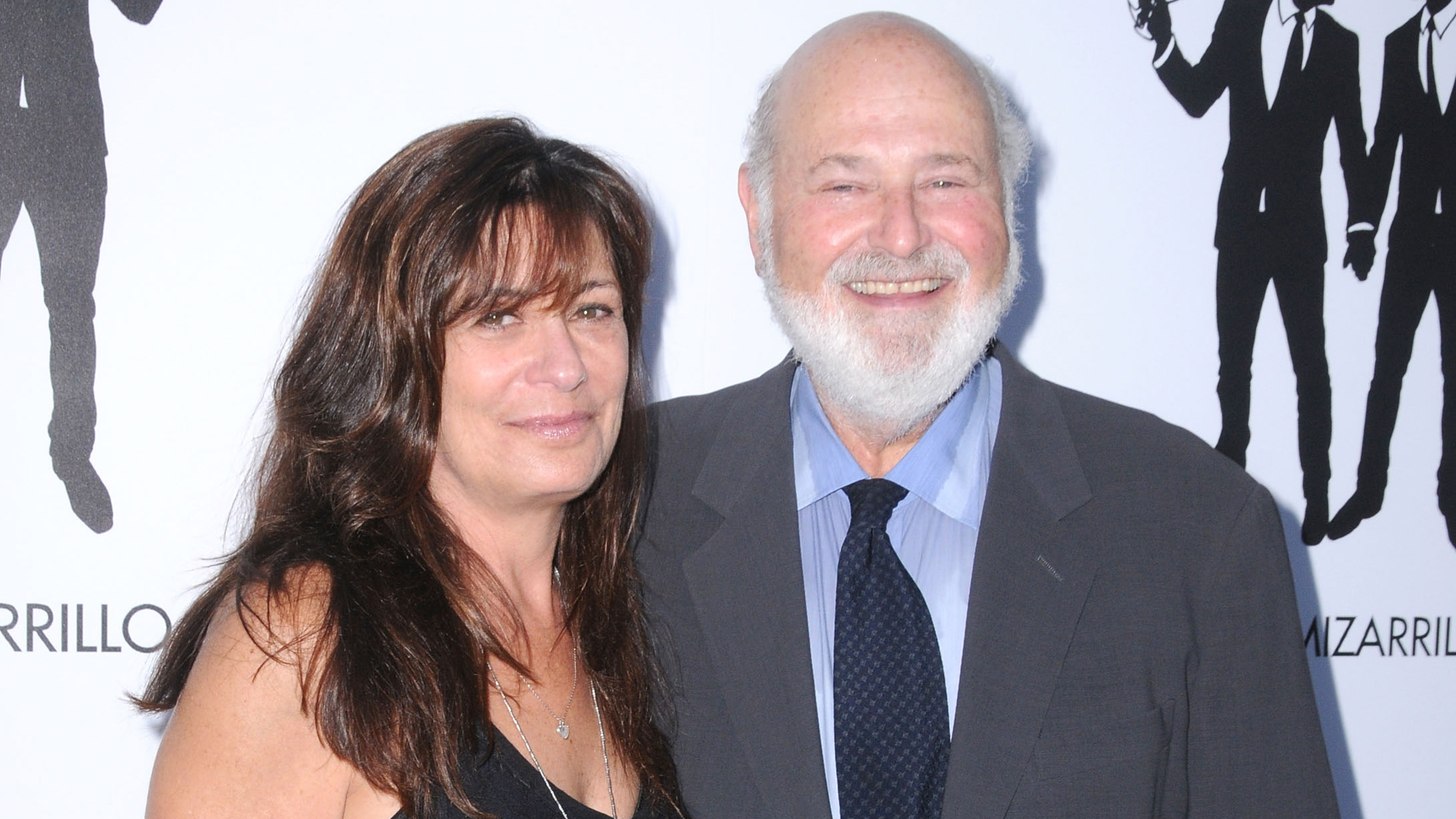Digital Camera World Verdict
PNY isn’t the biggest name in memory cards but the Elite X-Pro 90 SDXC UHS-II proves to be very capable, enabling extensive burst depths, transferring images quickly to a computer, and generally performing very well. For the price, the 128GB card is also very tempting.
Pros
- +
Attractively priced
- +
Impressive transfer rates
- +
V90 video speed class
Cons
- -
Can’t match CFexpress cards for speed
- -
Plastic construction
- -
No 32GB card
Why you can trust Digital Camera World
PNY has four SD card series and the Elite X-Pro 90 SDXC UHS-II cards are the flagship offerings. They are available in three capacities, 64GB, 128GB, and 256GB, each with claimed maximum read speeds of up to 300MB/s and write speeds of up to 280MB/s. In addition, as V90 cards, the minimum read and write speeds are 90MB/s, making them suitable for recording high-resolution stills at fast continuous shooting rates as well as 4K video and some 8K video.
The cards were previously known as just X-Pro 90, with PNY adding the Elite brand recently to the name to offer a little more pizzazz. Otherwise, the newer Elite X-Pro 90 SDXC UHS-II cards are exactly the same as their previous iteration. We have tested both the card under its old name and newer name, and can confirm there is no discernable difference in real-world testing, and with the same read and write speeds, our technical tests for the X-Pro 90 still hold up to the new and improved name.
Specifications
Max read speed: 300MB/s
Max write speed: 280MB/s
Available capacities: 64GB, 128GB, 256GB
Build and handling
Although PNY doesn’t quantify the boundaries for using the X-Pro 90 SDXC UHS-II cards, it states that they are magnet, temperature, shock and waterproof. While it doesn’t have quite the same rigidity as a Manfrotto Professional SDXC UHS-II card, after several months use in a variety of cameras and being squeezed in and out of a snug card wallet, my X-Pro 90 SDXC UHS-II card the looks exactly the same as it did when I first received it.
I’ve been testing the 128GB card and it has the black plastic construction that is common to every SD card I’ve ever seen. On the front there’s a smart black, green and white label that has a small white space at the bottom that can be written on, that’s handy if you have several cards and you want to number or label them in some way.
The best camera deals, reviews, product advice, and unmissable photography news, direct to your inbox!
On the left side of the card is a switch for locking or unlocking the card as required. Despite the tight fit of my memory card wallet, I never found this sliding accidentally as I pushed the card in or pulled it out.
On the back of the card there are the two rows of connections that are a feature of UHS-II cards.
Performance
When I used the X-Pro 90 SDXC UHS-II in the 45.7Mp Nikon Z 7II set to shoot at 10fps, I found I was able to capture around 122 Fine-quality Jpegs in one continuous burst. Switching to Fine* quality reduced the burst depth to around 80 Jpegs while shooting 14-bit uncompressed raw files enabled a sequence of 38 images to be captured in one blast. That’s a very respectable set of statistics and likely to be sufficient for most sports photography.
The PNY card’s speed also becomes apparent when transferring images from it to a computer. It took just 1 min 52 seconds to shift 100 Fine* Jpegs and 100 14-bit uncompressed raw files from the Nikon Z 7II, comprising around 9.7GB. That’s not as fast as the Lexar Professional 2000x SDHC/SDXC UHS-II, Kingston Canvas React Plus SDXC UHS-II, or Manfrotto Professional SDXC UHS-II cards, but it’s still very good.
These real-world use results are backed up by an impressive performance when I tested the X-Pro 90 SDXC using Blackmagic Design’s Disk Speed Test. This software indicated that the cards have a write speed of around 216MB/s and a read speed of 252MB/s, that’s the fastest write speed I’ve seen with an SDXC card and the read speed is only beaten by the Lexar Professional 2000x SDXC UHS-II card.
Disk Speed Test also indicates that if a camera allows it, the card is fast enough to record 8K raw video at 24p, but most cameras demand a CFexpress card for that. Nevertheless, it is possible to record less demanding 8K video formats to the card.
Verdict
Although PNY doesn’t offer a 32GB X-Pro 90 SDXC UHS-II card, the larger capacity cards are competitively priced with a 128GB card coming in at less than $120/£110. That’s just under twice the price of the 64GB card, making it a nice option for a day of photography or video.
The X-Pro 90 SDXC UHS-II also produced some of the best figures I’ve seen with an SDXC card in software testing, enables very good in-camera burst depths, and is snappy at transferring images to a computer.
Read more
Best memory cards
Best memory card readers
Best CFexpress cards
What is CFexpress Type A?
Best CFast cards
Angela has been testing camera gear from all the major manufacturers since January 2004 and has been Amateur Photographer’s Technical Editor and Head of Testing for Future Publishing’s photography portfolio (Digital Camera Magazine, PhotoPlus: The Canon Magazine, N-Photo, Practical Photoshop, Photography Week and Professional Photography magazines, as well as the Digital Camera World and TechRadar websites). She is the founder of SheClicks - a community group that encourages and supports female photographers.


